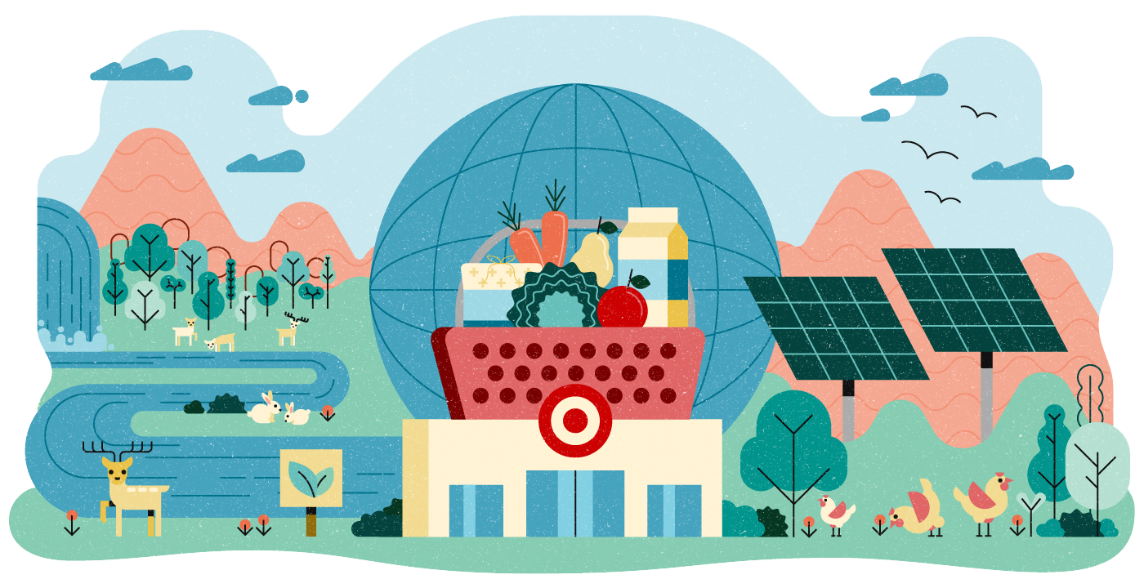Circularity
As we develop and manufacture Target owned brand products, we are taking steps to eliminate waste, keep products and materials in use longer and reduce our reliance on natural resources, all while finding new ways to engage with our guests.

For our environmental impact to be sustainable, it must be centered on circularity1 — by designing out waste, using more sustainable and/or durable materials and making reuse and recycling easier. These principles are incorporated throughout our business and guides Target team members as we consider environmental sustainability when we design products, processes and properties.
By doing so, we also enjoy added benefits. Circularity provides us with new ways to engage with guests, increases traceability and accountability, and helps us prepare for anticipated regulatory developments. Through these initiatives, we seek to reduce scope 3 emissions tied to the end of life of products and packaging. This also reduces our reliance on natural resources and redirects waste into raw materials for our owned brand products, which also can protect our business against unstable supply chains, shortages and fluctuating prices.
As part of our Target Forward sustainability strategy, we plan for 100% of our owned brand products to be designed for a circular future by 2040. We have identified Universal Thread and Everspring as our first two owned brands to be designed for circularity. In 2020, Target launched our Circular Design Guide website as an internal training hub. The website provides guidance on our four circular design principles (material choice, durability, repairability and recyclability) and includes internal case studies, resources and examples from other companies in the industry.
To enhance our own capabilities and drive change at scale, Target is involved in several groups that foster pre-competitive circularity1 programs and provide access to reports, insights and accelerator programs for innovators and start-ups, including: Fashion for Good, Global Fashion Agenda and Ellen MacArthur Foundation.
Explore Circularity
Product & Packaging Design
Waste Elimination & Reduction
Plastics
Plastics remain a priority as part of our commitment to circularity, and our goals focus on reducing and eliminating virgin plastic material use. By 2025, we intend to have 100% of our owned brand plastic packaging be recyclable, compostable or reusable, and reduce annual total virgin plastic in our owned brand packaging by 20% from a 2020 baseline3.
Read about our approach to plastics
1 Developing and manufacturing Target owned brand products, including taking steps to eliminate waste, keep products and materials in use longer, and decrease our dependency on natural resources.
2 The conservation of all resources by means of responsible production, consumption, reuse and recovery of products, packaging and materials without burning and with no discharges to land, water or air that threaten the environment or human health, as established by the Zero Waste International Alliance. The threshold to be considered “Zero Waste” is normally set at a minimum of 90% diversion rate.
3 Data covers food and beverage, and essentials and beauty categories only.